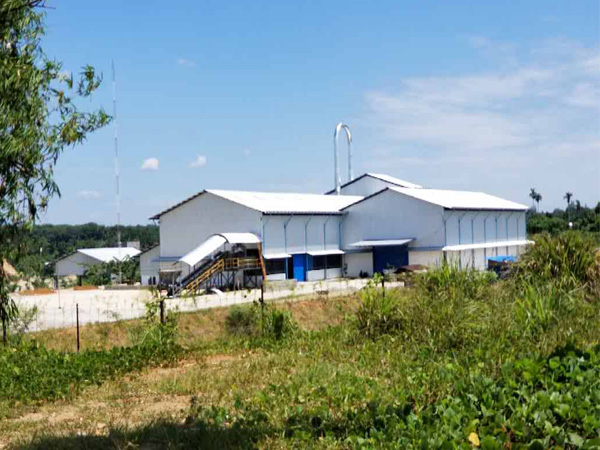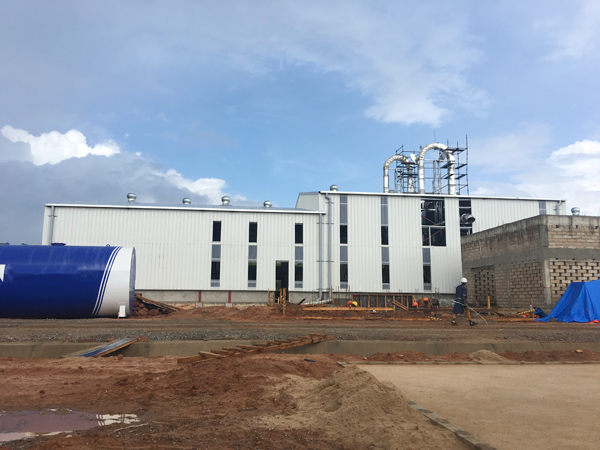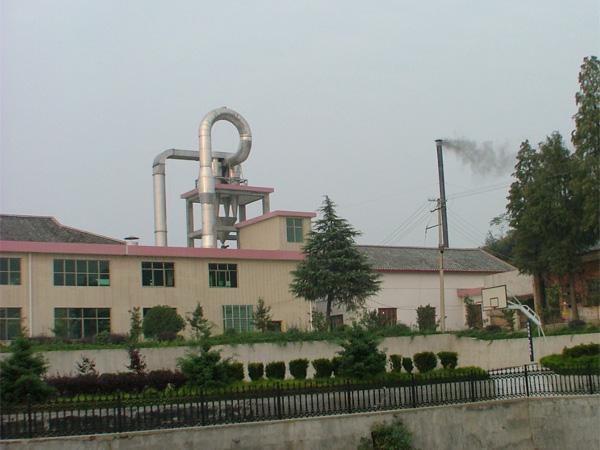Tapioca starch production line
Cassava is a sub-shrub and is a perennial plant. The roots are cylindrical, and the number and thickness of the roots vary greatly among different varieties. The cassava root has a high starch content, but contains little protein, oil and ash. The fresh cassava root starch content accounts for 25% to 32%. It is a high quality starch processing raw material in tapioca starch production line.
Fresh cassava after cleaning and washing in tapioca starch production line, to the dedicated in the rasper after sufficient crushing to the free state of starch, into the separation of slag pulp washing, through multistage wash thoroughly separation of starch in the slag, separating good starch pulp through several levels of amyloid protein separation and purification, into the dryer dehydration, uniform feeding dryer drying to the safety regulations in the 13-14% moisture, then packed in bags of 25, 50 kg for inventory.
 Tapioca starch production line
Tapioca starch production line
1.Raw material transportation
As the major constraint in tapioca starch production line, the roots of cassava are deteriorate rapidly. Cassava roots have 24-48 hours shelf-life after harvest, so the roots have to be processed within 2 to 3 days from harvest. The cassava should be transported into storage yard for processing as soon as possible.
2.Cassava cleaning and washing process
In tapioca starch production line, cleaning is engaged in removing the stone, weeds, sand and other debris of cassava. Then it goes into paddle washing machine for washing. The main purpose of washing is to remove sediment from the outer layer of cassava and to wash away the cuticle of the root. Clean sediment removal is required, and the peeling rate is required to be over 80%.
3.Cassava grating process
As the most important procedure in tapioca starch production line, grating serves to break the cell of cassava as much as possible so that the small starch granules can be released. DOING rapser is a machine designed by introducing international advanced technology and combining the characteristics of cassava, which can reach a breaking rate of 95%.
 Cassava grating machine
Cassava grating machine
4. Fiber sieving process
The sieving and washing of raw starch slurry is the key to the recovery of starch in tapioca starch production line. It is required to be sieved and washed by the original slurry, and the starch residue (dry basis) contains less than 35% starch, wherein the free starch contains less than 5%; the fiber impurity content of the starch slurry is less than 0.05%; and the starch milk concentration reaches 5-6 Bé.
5.Sand removal process
The specific gravity of mud and sand is greater than that of water, and is also larger than that of starch granules. Therefore separation by gravity separation is effective in tapioca starch production line.
6.Concentration and purification process
With the development of hydrocyclone technology, the starch hydrocyclone station is widely used in tapioca starch production line for removing protein,fibers, cell sap and other impurities. The pipeline of the hydrocyclone station is equipped according to the process requirements, and is equipped with instruments such as pressure gauges. This tapioca starch machine is compact in structure, convenient in installation, sturdy and durable and can guarantee the continuity of starch processing.
 Tapioca starch dehydrating machine
Tapioca starch dehydrating machine
7.Starch milk dehydrating process
The main function of dehydration in tapioca starch factory is to reduce the moisture content of the starch to about 40% to improve drying efficiency. Peeler centrifuge is used for this purpose in tapioca starch production line.
8.Starch drying and packing process
The desired quality of tapioca starch is produced by drying operation in tapioca starch production line. Subsequently, the finished starch is packed into different specifications appropriately.
Main indicator:
Turbidity <0.1,
Hardness <100, SO₂<0.55ppm, iron <0.9 ppm; pressure>0.2Mpa;
Raw cassava requirements: fresh, no mold, no large amount of sediment.
Water supply requirements:
Water consumption: 2 to 3 tons of water for per ton fresh cassava

-
 Cel/WhatsApp: +8613526615783
Cel/WhatsApp: +8613526615783
-
 Phone: +86 371 5677 1822
Phone: +86 371 5677 1822
-
 E-mail: market@doingmachinery.com
E-mail: market@doingmachinery.com
-
 Address: Room 1408,14th Floor,Building 9,No.133 Yaozhai Road,Jinshui District,Zhengzhou City,Henan Province,China
Address: Room 1408,14th Floor,Building 9,No.133 Yaozhai Road,Jinshui District,Zhengzhou City,Henan Province,China




